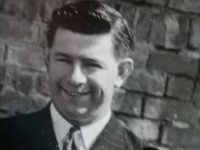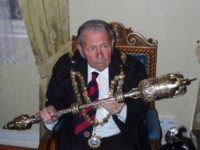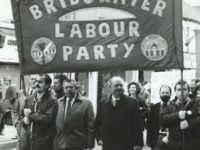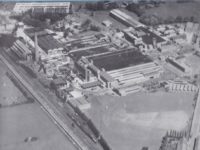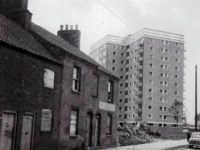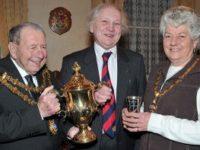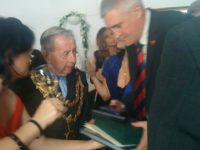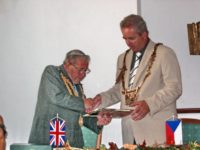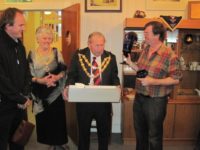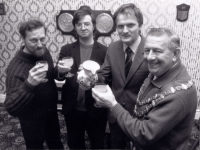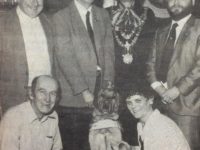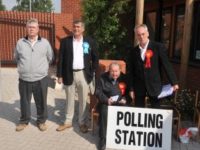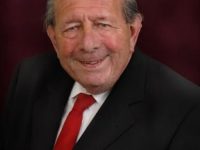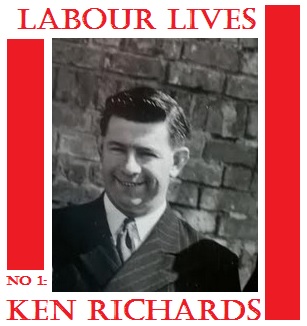 Bridgwater is a Labour town. In this series we look at the people that have shaped our town and our party and the people still doing it today. To launch the series, current Town Council Labour leader Brian Smedley interviews five times Mayor Ken Richards.
Bridgwater is a Labour town. In this series we look at the people that have shaped our town and our party and the people still doing it today. To launch the series, current Town Council Labour leader Brian Smedley interviews five times Mayor Ken Richards.
When I first stood for council in 1990 Labour was at a low ebb. Having fought with ourselves over the nuclear issue in 1987 we were down to 4 councillors. And now even one of those was standing down and causing a by-election in the Victoria ward. It was the height of the Poll Tax and I was selected to fight the seat. On my first day I went to Brendon Road and was astounded to find every single window had a ‘Vote Labour’ poster in it. What a morale booster! And from there we went on to win the by-election with more votes than all the other 3 parties combined.
Citizen Ken
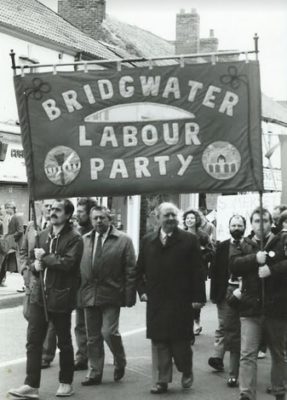
What had happened was the night before the sitting Victoria ward councillor, Ken Richards, had gone round every house and got them to put up a Labour poster and what Ken said people trusted and were happy to do. On election day – and on every election day, Ken spent the entire day sat outside the polling station with his oppo Maurice Spender, Ken greeting every Labour voter and Maurice insulting every Tory one – because they knew them all.
So to what did Ken owe his fearsome reputation for sticking up for his voters and how did he earn this loyalty and devotion around the town? The answer is that Ken is Bridgwater through and through. He was born and raised among the working class communities of the Victorian ‘courts’ that dominated West Street until the slum clearances of the 1960s , he worked in the Brickyards and at British Cellophane and he was a Trade Union negotiator and activist that made bosses quake in their boots.
Fireball Richards
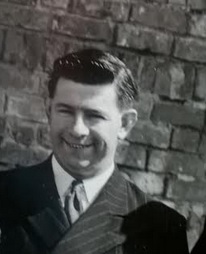
During the Poll Tax campaign I asked the American John McDonald, who knew Ken at Cellophane, what he was like in the early days and was told “Ken Richards was a Fireball!” (which sounds better with an American accent) and recently I asked 1980’s Union militant Glenn Cane about his later years and again was told “I had a lot of respect for him. Ken was known in Cellophane as a bit of a fire brand. Any dispute his first response was to threaten industrial action. Ken always told you the truth. At branch he took no shit. He was a good chairman and knew all the rules. Meetings never went over. Mind you, I always thought he just wanted to get to the pub. He was a man of few words. Any advice from him was by the book ‘if they back you do it, if they didn’t forget it’. He was difficult to control and always stood his ground if he thought he was right. He was far more of an action type of person and shouted the odds when any dispute arose. If someone had been wronged he would be there supporting them. I truly believe he hated management. There was never a chance he would take their side. Ken was working class union through and through.”
Son of Bridgwater
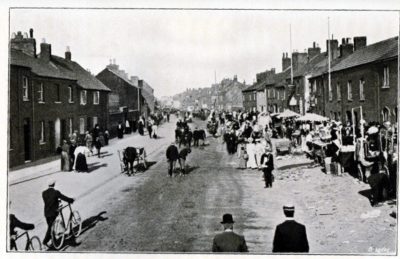
So, looking back at Ken’s eventful life, it’s clear he was shaped by his town and community and the workplaces that nurtured him. He never shifted from his Labour beliefs, his Union principals or his working class roots.
Ken was born in Albert Street on 15th July 1928. He lived at Number 1, Court 4 and there were 12 of them in a 2 room cottage. His dad, Thomas Richards’, side of the family had come over from Maerdy in the Welsh valleys in search of work and found it in the Bridgwater brickyards where he became a Master Brickmaker. His mum, Rosina Harwood, was a Bridgwater girl and,as was the life of the time, had to bring up the kids-in this case 5 girls and 5 boys. Ken was the 9th of 10.
When Ken was born in the 1920s, West Street was dominated by the ‘courts’ which had been constructed in the 19th century to house poor workers. But these quickly deteriorated into slums, notably along Albert Street. The poorest people in Bridgwater lived in these courts, which comprised of rows or yards of 6-16 small houses with shared facilities. This included shared toilets, 2 to a court and used by up to 40 people each. People boiled clothes in buckets over the fire grate. The atmosphere was damp, there was a high child mortality and TB and pneumonia were rife.The only surviving courts today can be seen at the end of Market street.
Labour Makes its Mark
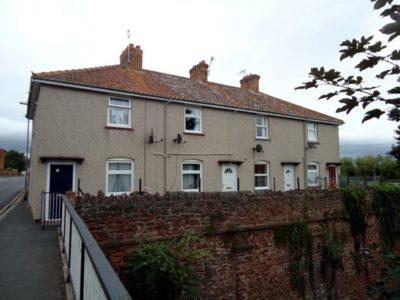
In 1924 Britain had its first Labour Government and one of the pioneering pieces of legislation was to introduce a ‘Housing Act’ to allow councils to build their own homes at subsidised and affordable rents. Bridgwater Borough Council were quick off the mark and in 1925 started to build council houses in Kidsbury and Kendale road. 51 were built and the 1st was opened on 7 April 1926
Ken was born into changing times and Labour was the force to make those changes. Changes which would shape the lives of people like Ken for the better. For most of Kens life, Bridgwater was to be Labour controlled and his faith in Municipal Socialism – working people getting themselves elected and making those changes at a local level, was absolute. In later years he would become one of Bridgwater’s longest serving Councillors and Mayor more times than anyone else in 100 years. In 1928 Labour was getting itself organised in Bridgwater and it is no surprise that it was the year that the Labour Party and the Trades Council clubbed together to buy Unity House as a permanent base for the Labour Movement in the town.
1920’s Bridgwater
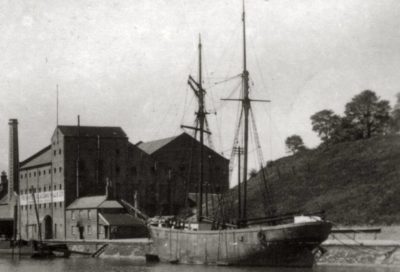
So what sort of town was Bridgwater in the 1920s? Ken was born only 2 years after the General Strike. Bridgwater’s population was some 17,000 and overwhelmingly working class. Apart from the ‘courts’ there were Victorian terraces, a few new ‘modern’ council houses and the middle class homes could only be found on Wembdon road ,Taunton road and Northfields -where the people who owned the brickyards and ran the town under the ‘non-political’ guise of the ‘Town Association’ lived.
Brickworks employed some 2000, the Railways another 400 but there was regular high unemployment, often running at 12%. On the other hand there were 62 pubs in 1928 and one of Kens favourites throughout his life was the Lions Club on West Quay which in fact started out as a social club for the brickworkers of Colthurst Symons.
Albert Street school, Ken’s local, had 836 ‘all age’ pupils and it’s head was Walter Barnet – who now has a care home named after him on the same site
In 1928 there was no Health Service and a Social Security system which basically amounted to ‘poor relief’ and included sending people to the workhouse -an evil Victorian system designed to put the blame on the poor for being poor and not on the system that created that poverty. Within a year of Ken being born it was closed down…although he probably didn’t have a hand in that.
In 1928 the Port of Bridgwater was operational – much of its trade being coals from Wales and bricks to everywhere. Ships would still sail up the river and coming from Bristol on the A38 you could spot the town miles off by the high masts rising from the flat Somerset levels.
The Depression and the War
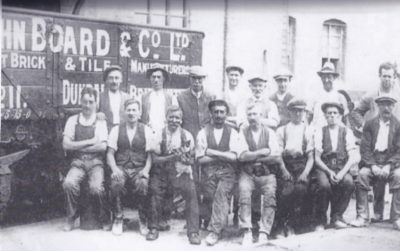
Ken lived through hard times in the 1930s when a crisis in capitalism led to mass unemployment, a great and devastating depression and eventually to the Second World War. At the age of 14 Ken started work. It was 1942 and the world was in the middle of the war. Ken started at the Brickyards for 4 pence a week. The brickyard was John Board of Dunwear. At the age of 18 he was finally allowed to join the Union. That was the Transport and General Workers Union – which was the modern version of the Dock,Wharf, Riverside and General Workers Union that had long been the dominant union in the town and had even faced the bayonets of the Gloucestershire Regiment during a clampdown on a Brickworkers strike which turned riotous in 1896. In fact it’s ironic that the Mayor who ordered the troops to attack the strikers was Henry W Pollard, the only Councillor until Ken to be Mayor 5 times.
BCL

As a militant shop steward in the brickyards he gained a reputation, but the industry was dying. In the 1950’s he moved on first to Hardy Spicers and then to British Cellophane. BCL was THE mainstay Bridgwater industry since 1935 when La Cellophane SA and Courtaulds first began building a major factory for producing Cellophane in the town covering 59 acres of the former Sydenham Manor fields, with direct railway access. The Borough Council even built Durleigh reservoir to provide water for the factory. During World War 2 the factory switched production to war munitions and specifically Bailey bridges for the invasion of Europe. These were used in Italy in 1943 and for D-Day in 1944. After the war the Bridgwater factory returned to producing cellophane with its products exported worldwide and by the late 1970s the site was producing 40,000 tonnes of cellophane packaging film each year and employing 3,000 people.
Kens days at Cellophane saw him as a well-respected Trade Union official with his beloved T&GWU. Although his day job was a ‘Slitter’, operating what was in effect a giant guillotine, his main passion (outside of rugby, darts, skittles and most sports) was sticking up for the workers and leading negotiations with management alongside Cliffy Fursland and John Turner.
Other workers remember him well. Current Labour councillors recall his forthright approach to negotiations. Dave Loveridge recalls him “as a table banger” and Graham Granter remembers him as “fiery”. Ken himself remembered “ I’d go in and I’d take my tie off and I’d say right, have I got to take my jacket off as well????” and at that point management usually caved in.
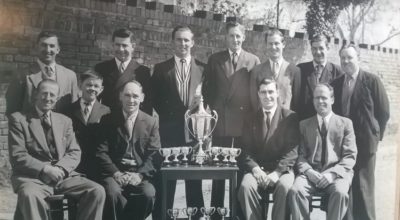
His son Stewart added “I think he was forthright in his opinions with his peer group and he may have used this technique to bring some conclusion to the squabbles that occurred. However when negotiating with management he was very clever at not entering a battle that he could not walk away with something to take back to his members. He always knew what the minimum was that he would accept and often walked away with much more than the minimum. He was very effective of making his points and then employing silence to get the management to respond in his favour. He once said to me as I moved through management after he had retired ‘make sure you do not back yourself into a corner when negotiating as no one likes to lose face with a climb-down’. Sound advice for that some of our politicians should heed today I believe.”
There was only one major strike during Ken’s time at Cellophane which lasted for just 2 days before management settled. Graham Granter recalls “Picket lines went up all round Cellophane and the T&GWU 3/54 branch was solid. Only the AEU engineers crossed it”.
Ken was a steward and site chairman for the TGWU at Cellophane and was National Chairman for education at the TGWU and it was in this role that he travelled not just around the country but to foreign climes as exotic as Japan.
Into Local Politics
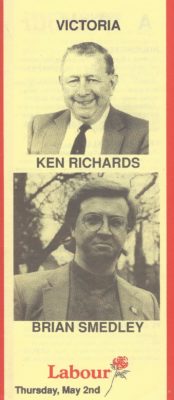 In the 1970s Bridgwater politics changed when the powerful red Borough was abolished and submerged inside the newly created Tory Sedgemoor. Ken had never stood for office outside of his Union before but now he tried his hands at local Labour politics winning his first election for Central Ward in 1973 only to lose it by 30 votes in 1976. But he bounced back and in 1979 he switched to the Victoria seat, standing alongside first Bill Chedgey, then Rene Bisset, then Brian Smedley, then Roger Lavers, then Elaine di Campo, then Mick Lerry – holding it for a total of 36 years undefeated.
In the 1970s Bridgwater politics changed when the powerful red Borough was abolished and submerged inside the newly created Tory Sedgemoor. Ken had never stood for office outside of his Union before but now he tried his hands at local Labour politics winning his first election for Central Ward in 1973 only to lose it by 30 votes in 1976. But he bounced back and in 1979 he switched to the Victoria seat, standing alongside first Bill Chedgey, then Rene Bisset, then Brian Smedley, then Roger Lavers, then Elaine di Campo, then Mick Lerry – holding it for a total of 36 years undefeated.
Dave Loveridge remembers “Ken was a good ward councillor. When I stood for North ward for County he came round with me and everywhere people said ‘you a mate of kens? Right we’ll vote for you.’ He had time for everybody -I remember one day we were canvassing down Kendale road and saw this bloke and he had an immaculate garden -we couldn’t see what he had to complain about. Ken said ‘you got your garden lovely, all you got to do is paint your fence’. The guy said- ‘that’s the point, each time I do the guy next door keeps turning the slats round!’. We struggled to keep a straight face.”
The People’s Mayor
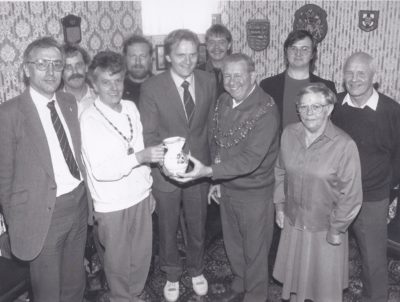
In 1981 Ken was elected Mayor of Bridgwater for the first of 5 times. A record in the 20th century. Declaring himself ‘a Peoples Mayor’ it was clearly a role he loved and he always said he couldn’t have done it without his wife and Mayoress Margo – a Londoner by birth, and who sadly died not long ago.
Town Clerk Alan Hurford, a one-time footballer of distinction, recalls Ken as Mayor in 1987 turning up to the Stade de Glastonbury and “…celebrating Bridgwater Towns Somerset Cup victory over the mighty Bishop Sutton (1.0) by standing on a table, dressed in Chain and side cocked flat cap performing his signature tune ‘Don’t Laugh at me cos I’m a Fool’ (the Norman Wisdom classic).” But Ken’s entertainment pedigree was at odds with his firebrand unionist image – as a youth he had performed onstage and on floats with Carnival gangs, including comedy routines at the Carnival concerts. And it didn’t take much for him to break into the ‘Red Flag’. In 2016 at a meeting in Sydenham House with his old buddy John Turner they performed this as a remarkable and spontaneous duet in front of the gathered well wishers.
Ken was Mayor in 1981, 1987, 1991,2001 and 2009. His record of attending events and supporting Bridgwater charities and community groups was second to none and he was never happier than when acting as Ambassador for his town. On one occasion he was even nominated to go to the Queens Garden Party at Buckingham Palace ‘for services to the people of Bridgwater’ which is a rare accolade.
Bridgwater Ambassador
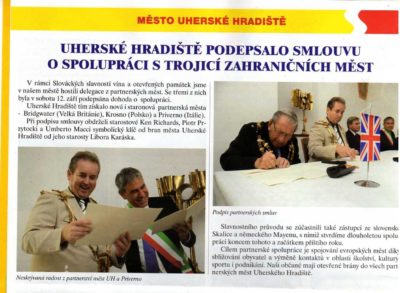
As Bridgwater Ambassador par excellence he travelled widely and took his role seriously and was never out of his depth amongst the hoi polloi he mixed with. Alan Hurford recalls on a visit to Malta in 2009 “We met the British Consul one night and he invited us to an official event at his Residence the next day. We turned up in a battered old minibus to find a line of Rolls Royces ahead of us. It was us stopped at the gates by security of course, but Ken flashed his Bridgwater Chain, they called the Consul and he vaguely remembered inviting us and so we were in! There was a Mayor from Pembroke there as well who was making a song and dance about them being the main Malta link but within minutes Ken had got in there, totally upstaged him and showed who was top banana.”

Ken was a socialist through and through and an Internationalist. In 1991 it was Ken that welcomed the first Czech visitor (Antonin Machala) to Bridgwater after the fall of communism in East Europe and this meeting led to Bridgwater becoming the first British town to twin with a Czech town (Uherske Hradiste). In 2009 he joined us in UH as part of their carnival-style procession. Despite him being 81 and it being a sweltering hot summers day in Moravia, Ken in full Mayors chains, with Margo alongside him, occasionally fag in hand, walked the procession for the full 2 miles and became the darling of the adoring Czech crowd. The younger German, Italian and Hungarian groups stormed off ahead with their flags flying but Ken tottered along calmly with the British flag flying aloft opening up a gap in the line which made him the centre of attention and cameras flashed the whole length of the route.
Bridgwater ‘Past and Present’
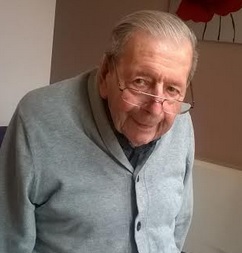
In 1965 Ken witnessed the demolition of the last of the West Street courts and the creation of a new and modern estate including Somerset’s only tower block. He’d seen Bridgwater grow from the Militant Union town of his youth to the Municipal Socialist Borough in the 50’s and 60’s. He’d worked in old industries and new, represented workers and their communities at home and abroad and he’d achieved as high office as he’d wanted to. But maybe Chairman of Sedgemoor would have been nice….
Today Ken is a resident at Sydenham House, run by Somerset Care, and was recently the special guest of honour at a celebration event there attended by members of his family, local councillors and the Mayor and Mayoress of Bridgwater, Cllrs Alex Glassford and Liz Leavy who congratulated him with an award for his lifetime’s commitment to the Labour Party.

